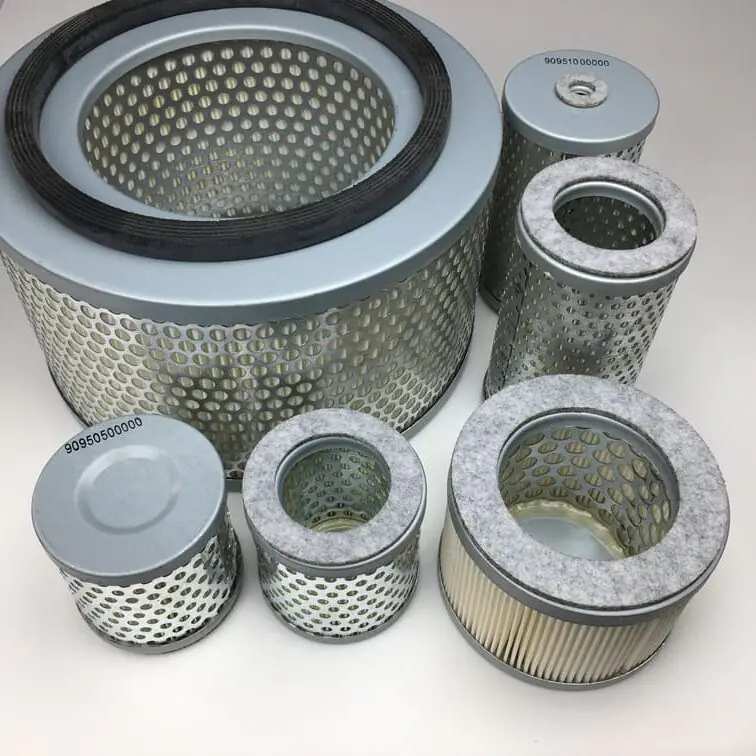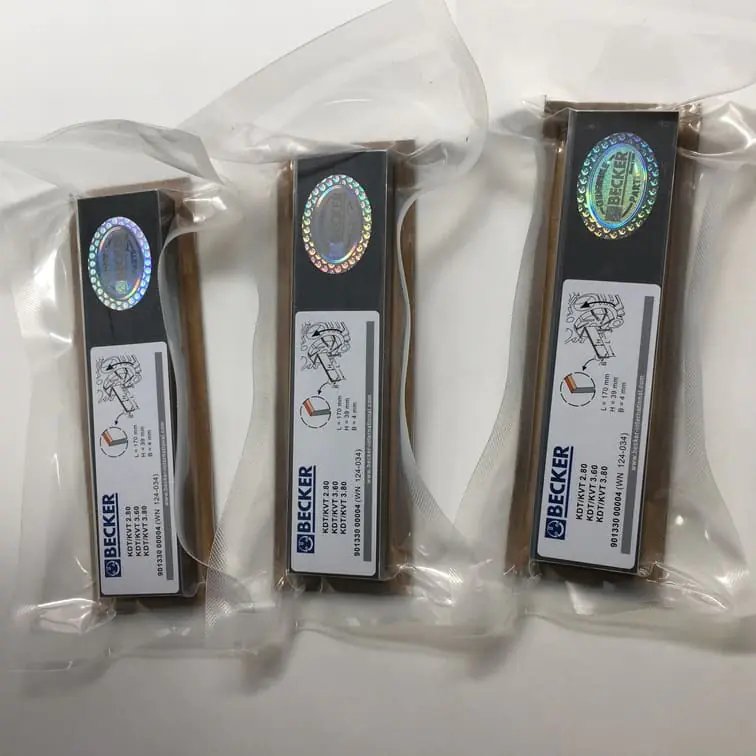How to Mix an Odor Neutralizer with Vacuum Pump Oil
Mixing an odor neutralizer with vacuum pump oil can significantly improve the working environment, especially when dealing with potentially unpleasant odors that arise during the operation of a vacuum pump. This guide will provide a comprehensive explanation of the methods, tools, and best practices for effectively mixing odor neutralizers with pump oil to maintain efficiency while controlling odors.
Understanding Vacuum Pump Oil and Its Role
Vacuum pump oil is a specialized lubricant used to create an effective seal and facilitate smooth operation in vacuum pumps. It plays a crucial role in reducing wear and tear, preventing contamination, and ensuring optimal performance. The choice of oil depends on the type of pump and the specific application in which it is used.
Odors can develop in the vacuum pump oil due to various reasons such as contamination from process gases or chemical reactions taking place during operation. Introducing an odor neutralizer can help combat these smells, ensuring a more pleasant working environment and reducing the potential for harmful exposure.
Benefits of Using Odor Neutralizers with Pump Oil:
- Improved Work Environment: Reduces unpleasant smells, making the workspace more comfortable.
- Odor Control: Neutralizes odor-causing substances within the pump oil, reducing emissions.
- Enhanced Safety: Lowers the exposure risk to potentially harmful organic or chemical compounds.
Tools and Materials Required for Mixing
To successfully mix an odor neutralizer with vacuum pump oil, you will need the following tools and materials:
- Vacuum Pump Oil: Specific to your pump type.
- Odor Neutralizer: Preferably a neutralizer designed for industrial use.
- Measuring Cup or Graduated Cylinder: For accurate measurement of oil and neutralizer.
- Mixing Container: A clean container for combining the oil and neutralizer.
- Stirring Rod: For evenly mixing the ingredients.
| Tool | Purpose |
|---|---|
| Vacuum Pump Oil | Base lubricant for the pump |
| Odor Neutralizer | Substance to control odor |
| Measuring Cup | To ensure accurate proportions |
| Mixing Container | For safe and clean mixing |
| Stirring Rod | To ensure even distribution |
Ensure that all tools are clean and free from contaminants to avoid compromising the quality of the mixture.
Step-by-Step Guide for Mixing Odor Neutralizer and Pump Oil
1. Measure the Required Quantities
The first step in mixing odor neutralizer with vacuum pump oil is to determine the appropriate ratios. Generally, the ratio depends on the strength of the odor and the type of neutralizer being used.
- Read the manufacturer’s instructions on the odor neutralizer to determine the recommended proportion. Typically, the ratio is between 2-5% neutralizer to oil.
- Use a measuring cup or graduated cylinder to measure both the pump oil and neutralizer accurately.
Tip: Always use precise measurements. Too much neutralizer can affect the viscosity of the pump oil, potentially impacting performance.
2. Combine the Oil and Neutralizer
Once the quantities are measured:
- Pour the vacuum pump oil into the mixing container.
- Slowly add the odor neutralizer into the oil. Adding the neutralizer gradually helps in preventing any sudden chemical reactions or foaming.
Important: Make sure that the mixing container is large enough to allow for proper stirring without spillage.
3. Mix Thoroughly
- Use a stirring rod to mix the oil and neutralizer until the solution appears uniform. This step is crucial because an uneven mix can lead to parts of the oil not being properly treated, reducing the overall effectiveness of the neutralizer.
- Stir for about 3-5 minutes, making sure there are no visible layers or bubbles.
Safety Note: Always perform the mixing in a well-ventilated area and wear appropriate personal protective equipment (PPE), such as gloves and safety glasses, to avoid direct skin contact.
4. Test the Mixture
Before using the mixture in your vacuum pump, it’s wise to test it:
- Pour a small amount of the mixture into a sample container and observe for any separation or unusual consistency over a period of 24 hours.
- If the mixture remains uniform, it is ready to be used in your vacuum pump.
Best Practices for Effective Odor Control
To ensure optimal odor control, consider the following practices:
- Regular Oil Changes: Changing the vacuum pump oil regularly prevents the buildup of contaminants that cause odors.
- Use High-Quality Odor Neutralizers: Opt for neutralizers specifically designed for vacuum pump oils to ensure compatibility.
- Monitor Performance: Observe the performance of the pump after adding the odor neutralizer. Any unusual noise, reduced efficiency, or overheating may indicate improper mixing or compatibility issues.
Tip: Odor control is best achieved by addressing the root cause. If the odors are too strong even after adding a neutralizer, investigate the source of contamination or consult with a technician.
Common Challenges When Mixing Odor Neutralizers
While mixing an odor neutralizer with vacuum pump oil is generally straightforward, there are common challenges you might face:
1. Incompatibility Issues
Not all neutralizers are suitable for all vacuum pump oils. Using an incompatible product could lead to foaming, oil degradation, or pump malfunction.
- Solution: Always check compatibility with the pump manufacturer or choose products recommended for your specific type of oil.
2. Overuse of Odor Neutralizer
Adding too much neutralizer may affect the viscosity and lubrication properties of the vacuum pump oil, leading to inefficient pump performance or even damage.
- Solution: Stick to recommended mixing ratios and measure accurately. Avoid the temptation to add extra neutralizer in an attempt to improve odor control.
3. Inadequate Mixing
If the neutralizer and oil are not mixed properly, the effectiveness of the odor control will be reduced, and the vacuum pump may not operate as efficiently.
- Solution: Ensure thorough and even mixing by using proper tools and allowing enough time for complete incorporation.
FAQs About Mixing Odor Neutralizers with Vacuum Pump Oil
1. What is the recommended ratio of odor neutralizer to vacuum pump oil?
Typically, the recommended ratio is 2-5% odor neutralizer to oil. Always follow the manufacturer’s guidelines for the best results.
2. Can I use any type of odor neutralizer with my vacuum pump oil?
No, not all neutralizers are compatible. Use a neutralizer that is specifically formulated for use with vacuum pump oils to avoid any performance issues.
3. How often should I add an odor neutralizer to my vacuum pump oil?
The addition of an odor neutralizer should coincide with regular oil changes. This ensures that the oil is always fresh and free from contaminants that cause bad odors.
4. Will adding an odor neutralizer affect the performance of my vacuum pump?
If used correctly, an odor neutralizer will not affect performance. However, overuse or using an incompatible product may cause issues.
5. Is it safe to mix odor neutralizers at home?
Yes, but always ensure you work in a well-ventilated area and use appropriate PPE to minimize health risks.
Conclusion
Mixing an odor neutralizer with vacuum pump oil is an effective way to control unpleasant smells that can occur during pump operation. By following the correct procedures, using the right materials, and adhering to recommended ratios, you can ensure a well-maintained, efficient, and odor-free vacuum pump.
Always consider compatibility and safety precautions when dealing with any chemicals. A well-mixed solution not only keeps odors at bay but also contributes to the smooth and long-lasting operation of your vacuum pump. Whether in industrial settings or a workshop, using odor neutralizers with your vacuum pump oil is a proactive step toward better maintenance and a more pleasant working environment.




